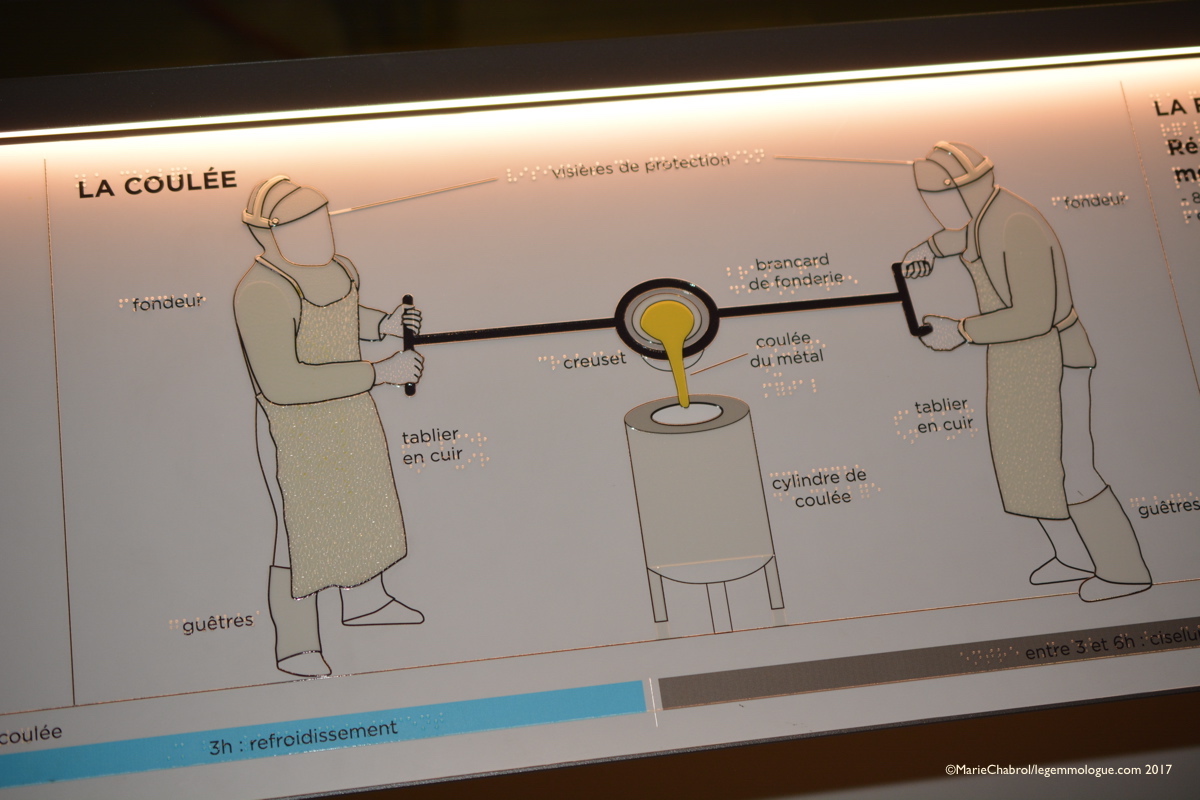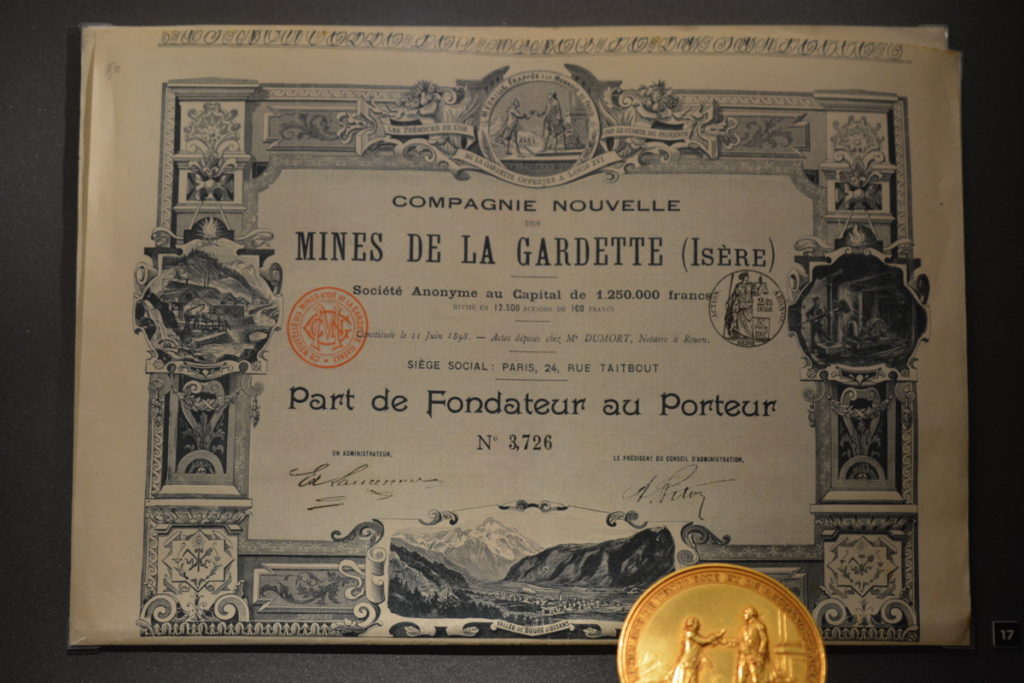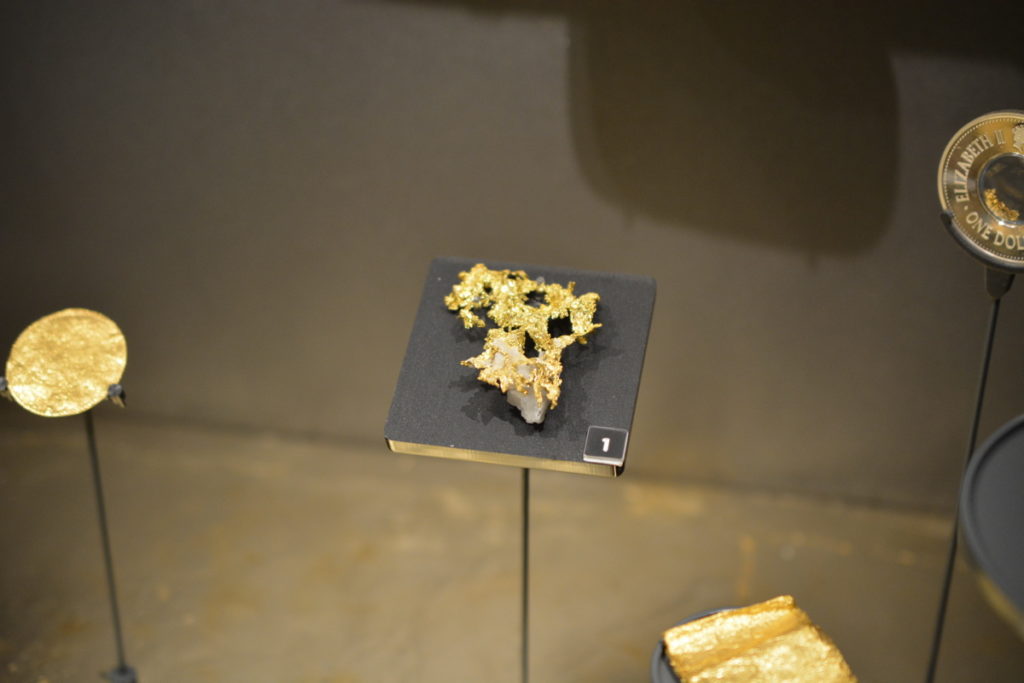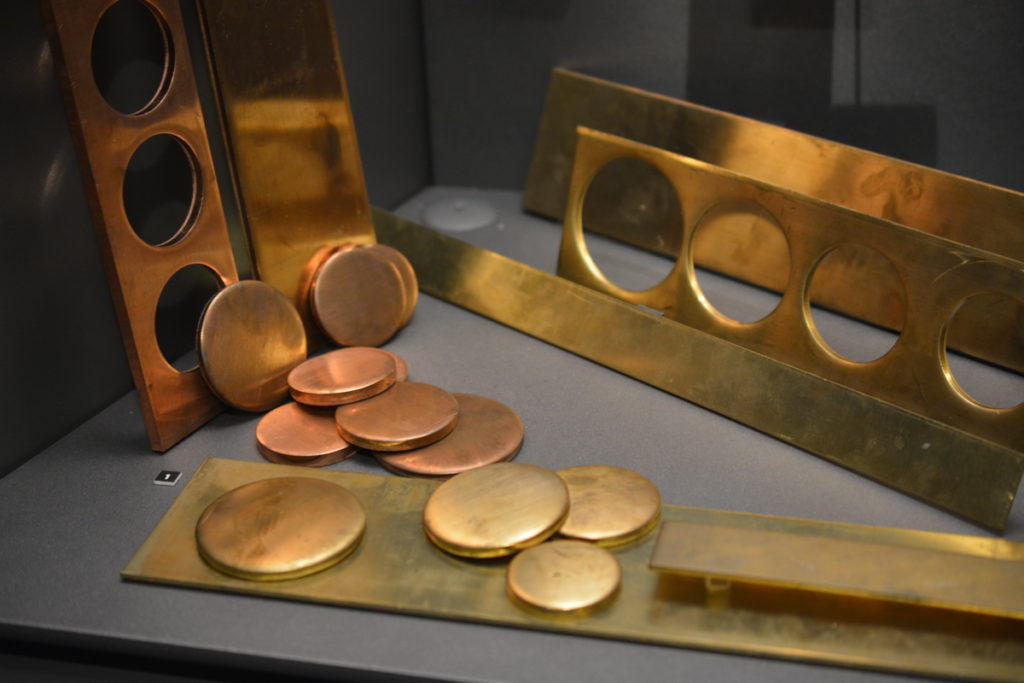“I don’t have any money with me”, “Give me some money”, “I’ll give you my coins, that’ll give you some change”, “It’s the end of the month, time to get some money”… Who hasn’t said or heard these little words, often in slang, intended to qualify what allows us to know the value of things? But do you know who, what, where and how money is made? So let me ask you a question: have you ever been to the Monnaie de Paris?

At the heart of the Grand Monnayage. Photo: Marie Chabrol
I am sure you know the place, at least by name. But perhaps you have never been through the heavy doors of 11 quai de Conti, which protect the prerogatives of this place and guarantee the sovereignty of the French State. For whoever mints the money, controls… And this is still true, even if Europe has largely reshuffled the cards in this area. But enough politics, this is a question of history, of know-how, but above all of introducing you to a place that I had the pleasure of visiting shortly before the end of the year as part of a fascinating press visit.
To get to the platform, Parisian transport offers many possibilities. Personally, on this cold December morning, I got off at the Pont-Neuf station and crossed the bridge as daylight was gradually breaking. The Eiffel Tower had its head in the clouds and the city was waking up. I found the itinerary pleasant and these few minutes of walking allowed me to take in the city a little, to admire the Square du Vert Galant and the barges along the Seine. Then, you just have to let yourself be guided through this imposing place which now offers a very wide range of opportunities to discover it.

In the entrance of 11 quai Conti. A medal on the floor tells of the common vocabulary that designates money. Photo: Marie Chabrol
On the face of it, minting money has little to do with jewellery. But in reality, the gestures are almost the same, the techniques are very similar and, above all, the institution has – for several years – initiated collaborations with the major luxury and jewellery houses, proposing a collection each year with a company that is a member of the Comité Colbert. Boucheron will be the first to do so in 2018 with the immersive exhibition “Vendôrama” which will open its doors in this mythical place in mid-January from January 12 until January 28. In addition, the Monnaie de Paris is a brand that offers jewellery, mainly medals, and art castings that are produced – from design to finishing – in its own workshops. Smelters, jewellers, engravers, enamellers, polishers, etc. work behind the high walls of these historic buildings.
On this December morning, I went there for a very specific reason: to discover and visit the new museum which opened its doors at the end of September 2017 after six years of work, to visit the new shop (which is a real wonder to find books, objects – including the famous medals! – and jewellery) and enjoy a gourmet breakfast prepared by Frappé par Bloom, which now operates in the Cour de la Méridienne. Let’s take a look back at this lovely experience which, I hope, will make you want to lose yourself for a few hours in this majestic place!

Geometric Akan weights (cast bronze, West Africa) from the Henri Abel collection, held in the Museum. Photo: Marie Chabrol
It’s no secret that the Monnaie de Paris needed work to breathe new life into itself and reinvent its offer to the public. So it was an ambitious project that saw the light of day in 2009 when Metal.Morphoses was launched with an architectural competition to rethink the place. If you have ever walked around the area, you know that the Monnaie’s facilities occupy more than a hectare in the heart of the 6th arrondissement. It’s a real safe that must be bypassed because it was completely closed to the public for a long time. It was therefore absolutely necessary to open up and decompartmentalise this place, which has been at this address since 1775 and where nearly 150 craftsmen work. But security also had to be guaranteed!
Three architects will be working from 2011 onwards and the result is grandiose when you know the constraints of the place, a large part of which is classified as a Historic Monument. Philippe Prost, Jean-Michel Willmotte and Hervé Baptiste will imagine the project and follow it through. In 2014, the grand salons were reopened to host contemporary art installations, which are now the success of the place. In 2015, Guy Savoy opened his Michelin-starred restaurant, which can seat 60 people. If the place seems atypical for such an offer, that is indeed where its interest lies. I can only advise you to go and have lunch there, the experience is exotic and particularly pleasant. Finally, in the same year, the workshops were transferred after having been refitted and standardised. At the same time, a central tooling and engraving workshop was created. The minting of exceptional coins and medals thus took its place in the Grand Monnayage.

Panel explaining the casting procedure. Photo: Marie Chabrol
It was not until 2017 that the museum reopened. But it was a great challenge. By modifying the structure of the workshops, the Mint recovered space and wanted the museum to be a complete immersion in the workshops. The museum is therefore based around the workshops in operation, which are visible behind armoured glass. The visit starts in the Foundry Workshop to discover the reality of molten metal, then continues in the Materials Room. Here you will discover the ores and metals used in the production process (gold, silver, bronze, tin, platinum, copper, nickel, iron and zinc).






1-Bearer’s note from the Gardette mine; 2-Gold nugget; 3-Bearer’s note for French copper; 4-Copper beads; 5-Bearer’s note for zinc and silver lead from Haute-Garonne; 6-Florentine bronze and monetary medals. Photos: Marie Chabrol
The showcases reveal rare historical documents such as bearer bonds, mineralogical specimens and, of course, minted coins explaining the quality of the different alloys used. The tour then takes you to the Laboratory, the Chiseling and Engraving Workshops and ends under the majestic vault of the Grand Monnayage. The experience is accompanied by interactive workshops with digital and sound devices that allow the visitor to immerse himself in the reality of the manufactory. Because minting money, melting metal or taking it back is noisy. This is often the criticism I make of museums dedicated to industrial heritage, where I don’t find my own experience of workshops and jewellery making. But here, I was happy to see and hear what I do on a daily basis!
In the wax and moulding workshop. Photo: Marie Chabrol
The permanent collection currently includes more than 170,000 objects acquired since the first museum was created in 1988. You will admire tools, coins (30,000 pieces are kept in the reserves), objects related to trade and exchange activities, documents, books, sculptures, paintings, etc. The collection is surprisingly rich and reveals the complexity of monetary history. In addition, there are several treasures never before presented to the general public: those of Des Authieux, Rue Mouffetard and Hué. Perhaps elements from the one recently discovered during the excavations at Cluny Abbey (November 2017, Paris) will one day join them… The museum would clearly be an excellent and natural repository.
Gold coin from the rue Mouffetard treasure. Photo: Marie Chabrol
Moneychanger’s box, Amsterdam, ca. 1628. Photo: Marie Chabrol
As you can see, I liked this place, I visited it with great pleasure and I will return there soon. Several temporary exhibitions are coming up and I am already looking forward to them!
In addition to the museum, the shop and the restaurant, the project that is gradually being unveiled now allows us to take possession of the inner courtyards. The decompartmentalization promised by the project is here and continues with the new phase of the project that begins in 2018. Currently, the Monnaie de Paris has just made public the access between Rue Guénegaud and the Mansard Wing. A street has been opened up to reach the Institut de France and the Place Condorcet. A perfect way to discover this sometimes forgotten 18th century Paris. In the coming years, the Mansard Wing will be restored and will host the jewellery and enamelling activities, the walled gateway to the Impasse Conti will be reopened and the existing 1,000 m² garden will finally be accessible to the public.
The Pessac factory strikes coins for many countries. Photo: Marie Chabrol
Process of manufacturing a Legion of Honour medal. Photo: Marie Chabrol
This ambitious project, which has already profoundly transformed the site and will soon complete its metamorphosis, is a must-see. If you live in Paris or are visiting the city, I can only advise you to take a few hours to visit the museum, stroll through the new boutique and have lunch at Guy Savoy or at Frappé par Bloom, which offers a more mainstream menu. The website is very comprehensive and offers a wealth of practical information to help you organise your future visit. Whatever you choose, you won’t be disappointed. Our country has remarkable cultural riches and I am happy to be able to associate you with them.
See you soon!












